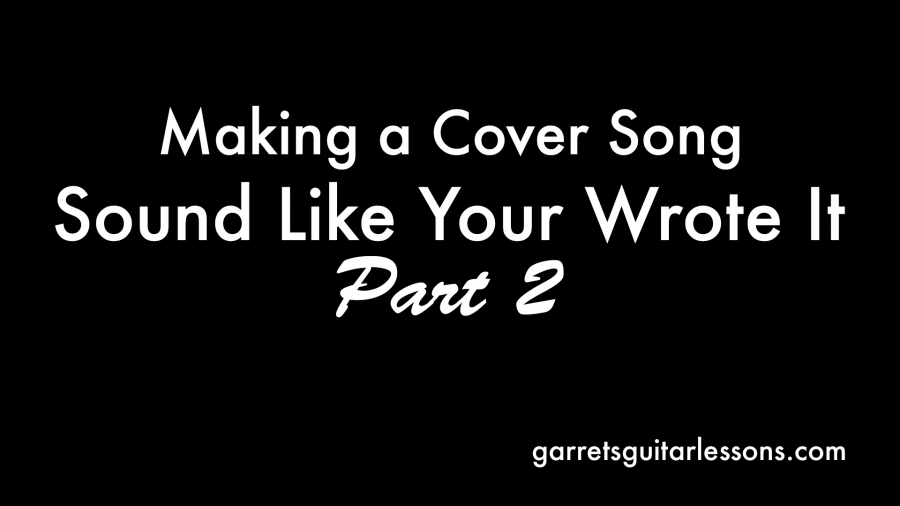So you’ve read my first blog on this subject and you’re ready for another push to really own that cover song. Here are two tips for exactly that.
Taking a Vamp, and Turning It Into a Chord Progression
A vamp is basically a repeating musical phrase. It can be a static chord or riff. Examples of this would be “Come Together” by the Beatles or “Superstition” by Stevie Wonder.
During the verses of “Come Together” has the infamous bass line. Maybe instead of having that bass line, what if we turn that riff into a chord progression? It’ll definitely sound different which is exactly what we’re going for. I’m going to be looking for other chords in the key that the riff is in. My riff is essentially a Dm riff so I’m going to be looking for other chords in the key of Dm.
Dm – Em7b5 – F – Gm – Am/A7 – Bb – C.
So here are some examples of chord progressions that’d work over the verse of “Come Together”.
Dm – C – Bb – A7
Dm – C – Bb – Gm
Dm – Bb – C – A7
Dm – Bb – F – A7
Dm – Bb – Gm – A7
It’d fit of it like this:
Dm Bb F A7
Here come old flat top | He come groovin’ up slowly
Will the melody change? Over some chord progressions more than others and it’s your cover so do what you want! If you’re trying to sound exactly like John Lennon then maybe this isn’t the lesson for you. Try messing around with an order of the chords and see what you like.
Changing the Whole Chord Progression
Yes, throw out all those chords the original artists use. The idea here is chord substitutions, so I’m going to walk through a simple chord substitutions explanation through the key of G. There’s a lot that can go into chord substitutions that I’ll delve into later, but this is perfect for the application we’re going through. If you want to move this to other keys follow my Chords as Numbers lesson.
Chords in the Key of G are: G (I) – Am (ii) – Bm (iii) – C (IV) – D (V) – Em (vi)
G (I), Bm (iii) & Em (vi) all can be used as substitutes
C (IV) & Am (ii) can be used as substitutes
“Wait, huh?” – Yup, our G & C act as stronger chords to the key, but we can try swapping some of them with their substitutes to give us a different sound.
Why you ask? Let’s compare our master chord G to Bm & Em (works for whichever one you treat as the “Master”).
G = G – B – D
Bm = B – F# – D
Em = E – G – B
Notice when we compare the notes of Bm and Em to G, their only one note off from it? That’s the jist of it. (All that go over your head? Watch my Building Chords?! lesson)
Same with C and Am.
C = C – E – G
Am = A – C – E
… close enough! 😉
Let’s try this in a song. How about… “Brown Eyed Girl” with substitutions.
Verse Progression: G – C – G – D
Chorus Progression: C – D – G – Em – C – D
Verse with Substitutions Progression #1: G – Am – Em – D
Verse with Substitutions Progression #2: G – C – Bm – D
Verse with Substitutions Progression #3: G – C – Em – D
Verse with Substitutions Progression #4: Em – C – G – D
With # 4 there, I took some liberties that completely changed the feel of the song… substituting the first chord, but still worked to my ears! In #2 all I did was change one chord and it still sounded good.
There’s much more to chord substitutions, but hopefully this will put a spark into that cover song you’re working on.
What substitutions do you like the sound of for the chorus progression of “Brown Eyed Girl”?

